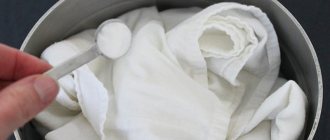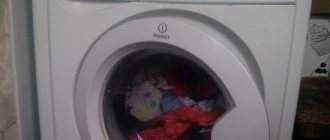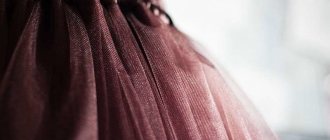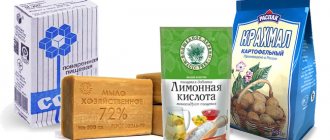Where do things in second-hand stores come from?
So, first you need to understand where these used items come from. Why are they being sold? Second hand is a profitable business that helps both sides of the process benefit. The first party is the seller, he often receives the goods at very low prices or as humanitarian aid, and his only expenses are transportation.
The second party is the buyer, who primarily considers the financial benefit that he can receive. New things are not always affordable for everyone.
Things are collected at special collection points at churches. These are clothes brought by parishioners, some bring their own worn clothes that are no longer needed, and some bring clothes after deceased relatives. It is important to understand that the deceased can become a source of infection for a healthy person who comes into contact with the patient’s belongings.
Such items store human biological material; it does not always go away when washed. Therefore, they are treated with a special substance that can kill all unwanted elements.
Second-hand clothes are often treated with formaldehyde
Formaldehyde is often used. But it has some peculiarities; after clothing comes into contact with this chemical, it still needs to be treated in order to reduce the concentration of harmful chemicals. Unfortunately, in our country no one controls this process in any way.
The whole truth about second-hand shops
There is so much talk now about conscious consumption, about proper disposal and recycling, about environmental friendliness and ethical products.
Caring and very talented guys produce and sell eco-cosmetics, shoppers to replace plastic bags, reusable fruit bags, straws, thermal mugs, sew clothes from recycled materials and do much more. And that's great. But there is another way of reasonable consumption, invented a long time ago - second-hand stores.
Let's talk about them. Conscious fashion
The fashion industry has a huge impact on our planet. On the one hand, there are high fashion weeks, aesthetics and a sense of beauty (which is most often subjective). On the other hand, there is pollution of the planet, almost slave and cheap labor of workers in third world countries and shelves of closets that are bursting with clothes in every second home in developed countries.
Just look at these numbers:
· The fashion industry ranks 2nd in terms of environmental waste pollution (1st place is the oil and gas industry).
· It takes 40 years for one synthetic T-shirt to decompose.
· 2,700 liters of fresh water are needed to produce one cotton T-shirt.
· 20% of the world's water is consumed by clothing production.
· 10% of all fresh water is polluted by the textile industry: dyes, surfactants, waste from the production of synthetic fibers and pesticides from cotton fields get into the wastewater of factories. People cannot use this water, aquatic plants and animals die, and then formaldehyde and metal compounds enter the soil from wastewater.
· Workers in clothing factories in third world countries receive $1-2 a day. Usually these are women and children.
· The working day of these people lasts 12-14 hours.
· 15% of all pesticides in the world are used to process cotton.
· 13 million tons of clothing are thrown away every year by people in the United States alone.
· 2 weeks – collections of mass market brands are updated with this frequency. Here it is, fast fashion in action.
· 1,129 workers were killed and more than 2,500 were injured when the Rana Plaza garment factory collapsed in Bangladesh in 2013.
There are thousands of such clothing factories all over the world. At the same time, people there often work in harsh conditions, without masks, inhaling harmful fumes for years, and as a result get respiratory diseases. By the way, documentaries have been made on the topic of the modern fashion industry, and we have already talked about five of them in this collection.
When clothing reaches the end of its life cycle, it most often ends up in the trash along with plastic and organic matter, begins to deteriorate, and such fabric can no longer be recycled. Then it ends up in a landfill. There, the material decomposes very slowly, while dyes evaporate into the atmosphere, emitting gas and polluting the air.
The logical question is: what to do about it? And the most obvious answer is to stop buying so much clothes and recycle them properly. Many people have already followed this conscious path, and the concept of fast fashion has been replaced by its antagonist – slow fashion.
Slow fashion is an approach to choosing clothes based on conscious consumption. The idea is not to succumb to the sweet speeches of marketers and beautiful pictures from the look books of fashion brands, but instead of ten low-quality but cheap items or five items of “so-so” quality, buy one high-quality item that is more expensive. And only out of necessity, and not because “I wasn’t in the mood, I wanted to cheer myself up” or “well, before it cost twice as much, but now it’s on sale.”
The same principles are embedded in the concept of sustainable fashion (conscious, environmentally friendly fashion). This fashion also calls for abandoning consumerism, buying thoughtfully, and choosing ethical and environmentally friendly materials. And also properly dispose of old clothes: if they are in good condition, give them to those in need or exchange them at some garage sale, swap, if you can no longer wear them, breathe new life into them yourself, alter them, find a new use (this is called upcycling) or hand them over to processing.
People who embrace conscious fashion don't support the mainstream fashion industry because it pollutes the environment and encourages harsh working conditions and cheap labor. Such people find vintage items in second-hand stores, sew them themselves, or exchange clothes with friends and like-minded people. And if swaps have not yet been invented in your city, there are not too many like-minded people yet, and you can’t sew yourself (besides, you still have to use fabrics whose production has left its mark on nature), then second-hand stores are your option. They are in almost every city.
The truth is simple: when we buy new clothes in the mass market, we encourage overconsumption, paying for giant corporations to continue polluting the planet and keeping their workers in appalling conditions. When even one person refuses overconsumption and goes to buy jeans not in a store or market, but in a second-hand store, he does not pay for new harm to the planet and reduces the environmental burden of the industry. This is the theory of small things in action.
What is second-hand
Thrift shopping is a balance between your inner shopaholic and your inner eco-activist. This is a solution when you need (or really want) to buy something, but don’t want to be a pest.
The meaning is this: we are already buying something that was produced and used once in the past, and we do not in any way influence consumer demand from the point of view of the manufacturing corporation, which means we do not provoke supply. We simply reuse. The format of second-hand stores fits perfectly into the well-known concept of 3R (reduce - consume less, reuse - reuse, recycle - recycle) or the newer 6R (rethink - rethink, refuse - refuse, repair - repair, reduce - consume less, reuse - reuse, recycle - recycle).
When we buy a new thing in a store or online store, we pay not only for this thing, but also for the cheap labor of workers in the fields and factories, water for irrigating cotton and flax, for chemicals, dyes that then end up in the water and soil, for fuel. That's the minimum. When we buy an item at a second-hand store, we have already paid for it, and we are saving the item from a landfill and at the same time updating our wardrobe.
“Second hand” literally translates as “second hands”. This concept appeared in Great Britain, when royalty gave those close to them outfits from the royal shoulder. In Russia it became widely known in the 90s, but rather as a “humanitarian aid” or “thrift store”, where a shabby fur coat, a greasy grandfather’s sheepskin coat and all sorts of crumpled rags lay in a heap. The smell was also characteristic.
Now everything is different in second-hand stores. Spacious rooms that are well ventilated often provide a stylish, although not too pretentious, interior. Things hang on hangers, clean and carefully processed, disinfected - they even have special certificates.
By the way, the clothes in these stores are not necessarily “second-hand”, that is, those that someone has already worn - there are completely new things, with original tags and labels. These are stock clothes that have not been sold out in stores.
Second-hand stores come in different formats. There are very modest ones, where no-name clothes still lie in heaps and are sold by weight. There are mediocre ones: things, most often from the mass market, hang on hangers, and they have price tags. There are small vintage shops that look like a retro treasure box - unique handicrafts and jewelry are lovingly collected there. And there are even luxury stores where you can easily find new items from old collections of world brands, for example, Burberry, Gucci, Dolce & Gabbana, Kenzo, Hugo Boss, Lacoste, Lee. Prices in them, of course, also differ greatly: from tens of rubles in the former to tens of thousands of rubles in the latter.
Second-hand is no longer shameful, not “things from the trash heap” and certainly not “clothes of the dead,” as someone with an insatiable imagination used to think. Now everything is different. Dressing second-hand sounds reasonable, fashionable, and most importantly – very eco-friendly.
Moreover, second-hand clothing is now one of the trends. In 2021, for example, More or Less magazine was published, a project of former creative director of British Vogue Jamie Perlman, also the first magazine about conscious consumption. On the cover - Kate Moss, and in principle - finds from second-hand stores, vintage, old sports uniforms and hand-made instead of collections that have recently come off the catwalk.
Why do people go to thrift stores?
There are several reasons why modern people buy things in second-hand stores.
1. It's environmentally friendly: instead of throwing away clothes that someone no longer needs, they are reused. But even its disposal would require considerable resources.
2. It’s economical: clothes in a second-hand store are several times cheaper than in regular stores. And cheaper than ethical clothing stores. For 1-2 thousand rubles you can create a complete image.
3. In a second-hand store you can find unique, vintage items that no one else will have.
4. There are also completely new things in thrift stores. Only much cheaper.
5. All clothing undergoes special processing, has certificates and is completely safe. Even in regular stores, it is unknown how many people tried on the item before you. Or perhaps someone has already worn it and returned it back to the store.
6. Good thrift stores bring luxury brands. Firstly, here they are at a very reasonable price. Secondly, not in every city you can buy such things in principle.
7. Things here are of higher quality. For example, for a thousand rubles in the middle segment of the mass market you can buy one of the cheapest sweaters that will last one season. In a second-hand store for the same price you can find a branded sweater made to last for years.
8. Second-hand stores often sell basic items and modern, yet timeless classics, for example, pumps, Converse or Vans sneakers, Lacoste polos, Levi's jeans.
9. There's also a lot of old-fashioned, old-school stuff. And fashion always comes back.
10. In such stores you can find not only clothes, but also accessories, shoes, textiles, books, toys, and interesting things for the home.
11. In second-hand stores it is profitable to buy things for one time, for example, a carnival costume or a cowboy hat.
12. There is also a large selection of specific items, for example, ski suits or clothes for pregnant women.
13. There are a lot of children's clothes and shoes in excellent condition.
14. Second-hand stores are a place where it’s easy to get inspiration and give things new life. For example, you can buy jeans and sew them into a reusable shopping bag. Make pillow covers out of several shirts, and flower pots out of rubber boots. Complete upcycling!
15. Many people like to wander around these stores and just hunt for things or brands.
16. Excess is no longer in fashion. And second-hand stores are in fashion.
How things end up in thrift stores
Before clothes end up in a second-hand store, they go through a real journey.
First the clothes are collected. In Russia, the culture of collecting clothes is still in its infancy, although collection points have already appeared in many large cities. Items in our second-hand stores most often come from the UK, Italy, Germany, Sweden, the Netherlands, Switzerland, Norway and even Canada. In these countries, collection is carried out by special companies that have a license.
Usually there are container, home and school assembly. In Europe, special containers for collecting things are normal practice. They are located in some offices, in large stores (we have followed this path, for example, IKEA), on the streets near residential buildings. Sometimes the collection takes place in schools, and sometimes empty bags for things are delivered to apartments and houses, and then they are taken away. Among such things are not only clothes, but also shoes, textiles, and toys. They are almost always in excellent condition, often never even used, as the tags indicate.
Another category of things is stock. These are clothes that were not sold out in stores. At first it was sold at a discount, then it was sent to outlets, and then they were bought by special organizations. These items are brand new, still with tags and labels. True, some luxury brands, for example, Louis Vuitton or Christian Dior, cut off all labels and tags before selling items to such companies - they are afraid that this will harm their reputation.
Then all collected items are brought to sorting points or special factories, sorted and disinfected. They are sorted into different categories: Eurostock - brand new from previous collections with all labels and tags, cream - without signs of wear or new with cut off labels, luxury - almost new, with minimal wear, category 1 - with signs of wear or outdated models, original - other things collected by container, home or school assembly, even rags end up there. Also, items can be sorted by season, by type of clothing (separately jeans, T-shirts, knitwear, jackets).
After special chemical or steam treatment, items are packed into sealed bags weighing from 5 to 100 kg and labeled. And only then from these sorting points they are loaded into vans, trucks, and they are sent to different cities and countries. Including Russia. At the border, the driver is required to show certificates of conformity and safety - they list all the reagents that were used during sanitary processing, and the sanitary service can randomly check the goods.
Then the goods go to a general warehouse or directly to stores. There they sort it again, stick price tags on it (if the goods are not sold by weight), and when necessary, wash it or send it to the dry cleaner again. And only then things end up on hangers or store shelves.
The process is a little different in some professional vintage stores in Russia. The goods for them, already processed and completely safe, are carefully selected in vintage shops in Europe and America, brought to Russia and processed again to meet Russian sanitary standards.
How things are processed
When you come to a second-hand store, you always feel this characteristic pungent aroma. At least that's how it used to be. This is a mixture of formaldehyde and methyl bromide, which is used to treat items before sale.
Nowadays, new technologies are increasingly being used - steam chamber processing. Things are sent to special chambers where they are treated with hot steam. Particularly delicate fabrics are steamed at lower temperatures. After this treatment, the clothes are dry and do not smell at all.
Both chemical and heat treatment are excellent disinfection and disinfestation. Of course, formaldehyde and methyl bromide are harmful to humans, especially to the eyes, skin and respiratory system. But completely avoiding this chemistry in everyday life is almost a utopia. Formaldehyde, for example, is found in the atmosphere (due to exhaust gases, waste incineration plants, thermal power plants), in wooden furniture, laminate flooring, parquet, varnished floors, cigarette smoke, and nail polishes. There are maximum permissible standards for the concentration of formaldehyde - in this case it is harmless.
At customs, sanitary services carefully check the concentration of chemical vapors in imported goods, and therefore there is neither a risk of infection nor a chemical threat to health in clothes from second-hand stores. From this point of view, it is much riskier to buy clothes from the market: many items are made from low-quality fabric using dangerous dyes.
Another question is how to get rid of this “second-hand” smell, if it exists? In fact, this is not difficult: you can wash the item with fabric softener, soak it in a solution of ammonia, rinse it in vinegar solution after washing, steam it thoroughly, hang it in a closet with an aromatic sachet, or simply hang it out to air in the cold.
Second-hand shops: personal experience
I don’t remember where it all started and how it happened, but for the last 3-4 years I’ve been dressing almost entirely second-hand. I buy everything there: jeans, T-shirts, cardigans, sweatshirts, sportswear, jackets, shoes - everything except underwear and swimsuits (although they are there too).
I was lucky: in my city - Cheboksary - for unknown reasons, the second-hand culture is very developed. Every area has at least a couple of such stores, very pleasant, neat, without that toxic smell.
But my absolute favorite is Streets of London. It has existed since 1995, and today it is a whole network of 7 stores. This network has its own website, social networks and even an online store. All the clothes here are either brand new, with original tags, or minimally worn.
Almost all things are branded - from mass market to premium brands. The prices are appropriate, and sometimes you don’t expect to see them at a thrift store. So, for example, one day my friend bought a new coat here from last year’s Kenzo collection for 25 thousand. Although this is the exception rather than the rule - I usually choose a complete look for myself with shoes and outerwear no more expensive than 3-5 thousand rubles. There are things with price tags, and there are those that you buy by weight. More than once I came across exactly the same things that I bought in stores a couple of years ago, but at several times cheaper.
For me, a second-hand store is like my grandmother’s chest: until you rummage through, you will never know what treasure is stored there. This is also one of the steps towards conscious consumption. Among the disadvantages that have a detrimental effect on the environment are the fuel that trucks burn when transporting cargo from Europe to Russia, and the chemical compounds that are used to treat clothes for disinfection. But the first disadvantage is almost inevitable, and the second is harmless in the quantities in which it is used.
Tips on how to shop at thrift stores:
1. Go to a few thrift stores in your city or area and find your favorites. Maybe it’s important for you that all your things are neatly hung, or maybe you’re ready to rummage through a bunch of clothes, but find something like that for just a penny.
2. Be prepared to search and don’t set a clear goal to buy something specific - this won’t work at a second-hand store. Here, every item is unique and in one size.
3. Look at each item as a fabric or as an opportunity to create something new from it.
4. And in general, pay attention to the fabric. Some say that even if the clothes bought in a second-hand store were not produced environmentally, the purchase itself can be considered conditionally ethical. However, avoid leather, wool, and silk. And try not to buy old synthetics.
5. Carefully check that there are no stains or damage on the clothes, and that the item itself is of high quality.
6. Think carefully about your purchase - take a photo of yourself wearing it, ask to put it aside at the checkout for 10-20 minutes while you walk around the store, and, if there is no doubt, take it.
7. But if you postpone the purchase until the next day, be prepared that, with a high probability, someone else will already buy it by tomorrow.
8. Choose items by size. Don’t take something thinking that you will sew it up later - most likely you won’t.
9. Don’t chase brands and don’t buy everything. We still want to reduce consumption.
10. Adhere to the principle of a capsule wardrobe, when all things can be divided into different “capsules”: for work, for leisure, for sports. Buy basic items that go well together in color and will not go out of style for a long time.
11. Pay attention to vintage accessories - you can add them to your base.
12. Look for things outside of your department. For example, I am small in stature and size, and most of my finds were in the children's department. And among men's clothing, I found oversized sweatshirts.
13. Follow the receipt schedule. Before a new arrival, stores try to sell out everything, so they offer discounts of first 10–20%, and then 50–80%. And on the day of admission, you can easily snatch something truly valuable.
14. Remember that thrift stores sell not only clothes and shoes, but also books, household goods, textiles, and toys.
15. Wash items after purchase. Not only in second-hand stores, but in any store.
All the clothes and shoes in the photo above are from second-hand stores. Each image costs no more than 3–5 thousand rubles.
1. American Eagle jeans, Burberry shirt, Seven Sisters cardigan, Tally Weijl boots
2. American Eagle jeans, Fred Perry polo, GAP sweatshirt, Polo Ralph Lauren jacket
3. Topman jeans, sweatshirt (with the word GO GREEN, made from 100% recycled plastic) Cat&Jack, Levi's denim, no name boots
4. Shana dress, C&A jacket, no name boots
5. Topshop skirt, Lacoste polo, The North Face windbreaker, no name boots
Anna Trofimova
What are the health hazards?
Formaldehyde is dangerous to human health, especially to the respiratory tract. But at the same time it is dangerous for the skin and has a negative effect on the human reproductive organs and genetic material. This substance is toxic and care should be taken when coming into contact with it.
At the points of sale of goods they sell not only used clothes, but also shoes. Special business has its own characteristics. Processing items before selling is a process that takes a lot of time. This requires people, they will work with chemicals.
If you believe official statistical data, then about 3% of people on our planet use things that were worn before them and were purchased at special sales points.
But not everyone is aware of the risks to which they expose their own lives. Such things pose a particular danger to children.
The child's body is very susceptible and it is not known how this may end up. However, this does not scare people.
What do second-hand items smell like?
Most of the items sold in second-hand stores were used. To eliminate the risk of infecting the new owner of used clothing with various infections that the former owner may have suffered from, they are treated with special disinfectants before sale. For this, formaldehyde and methyl bromide are usually used. It is these substances that are responsible for the specific “second-hand” smell.
In addition to eliminating strong odors, there is another reason why it is recommended to wash second-hand items before use. The fact is that the products used to disinfect used items on sale are extremely toxic. Upon contact with human skin, wardrobe items treated with them can not only provoke allergies, but also affect the reproductive and central nervous systems, and also cause the development of cancer cells.
According to sanitary standards, after disinfection, things must undergo additional treatment with a 25 percent solution of ammonia. However, this procedure is not always carried out efficiently, and in some cases it is not carried out at all. In this regard, before putting on an item bought at a second-hand store for the first time, it is recommended not only to remove the smell, but also to wash off the remaining particles of the disinfectant.
In second-hand stores, items are processed in processing plants by chemical action using formaldehyde and steam. Treatment with such compounds destroys bacteria, fungus, parasitic insects and everything that could be transmitted to the potential owner from the previous owner.
After such chemical prevention, a characteristic intrusive odor remains, which can last for quite a long time and “infect” other things in the closet. Therefore, after returning from a second-hand store, purchased items should not be sent to a permanent storage location until they have been washed.
Second hand as a business
The used clothing market is full of such items; they are in great demand and are often sold by weight. This is quite profitable, because instead of one new thing you can buy two, three or even more that are not new.
Entire companies are being organized that want to make a profit based on the resale of used items; they are imported from abroad. After transportation, they are sorted, sorted, processed and sold to those who do not disdain such things.
Many people believe that by washing things from such a store, you can get rid of all possible unwanted problems. This, unfortunately, is not always the case. If the state controlled this process even a little, there would be fewer risks.
How to get rid of the smell?
Knowing how second-hand clothes are treated, you can find ways to get rid of the smell. Let's highlight them:
- The simplest method is to wash the clothes in a washing machine at the desired setting, and then take them out into the fresh air.
- Ammonia effectively removes odors. Requires 50 ml of alcohol per 5 liters of water. Keeping a thing in water costs 2-5 hours, depending on its characteristics and composition.
- Another option is soaking in salt water or water with vinegar. It is also allowed to mix salt and vinegar.
- Unpleasant odors are interrupted by air conditioners or strong fragrances.
- After rinsing, you can add essential oil or aromatic salt to the water. They will give a pleasant smell to things.
This makes it very easy to get rid of the smell of second-hand clothes.
Where do things for sale come from?
In specialized used clothing stores, items appear from abroad.
They are mostly imported from the United States of America, but also from other countries. The main consumers of such clothing are Pakistan, Russia, Ukraine and other countries whose economies are not in the best condition. This is not a problem for each individual person, but for the country as a whole. Because if a person cannot afford to buy new clothes due to insufficient income, then the entire country is at risk.
At the state level, control should be carried out over the volumes of goods imported into the country.
Advantages and disadvantages of second-hand clothes
There are countries that are engaged in the resale of things, with specially organized enterprises buying clothes, often by weight, from the population directly, after which it undergoes some processing and is resold to the end consumer.
The people selling these things also receive a certain benefit, so there is a whole chain of those who want to benefit from such manipulations. So, let's look at the advantages and disadvantages of such a business in order.
Advantages:
- the end consumer receives clothes at significantly lower prices compared to new items;
- the one who organized a business based on this remains in the black because he makes a profit;
- those who sell unnecessary things also receive a certain amount in their hands;
- wide selection of products at affordable prices.
Flaws:
- Undesirable substances remain on clothing; in low concentrations they are not particularly dangerous, but if the permissible standards are exceeded, they can negatively affect human health;
- no one controls the level of chemicals on things that reach the person who will wear them;
- In addition to outerwear, second-hand stores sell underwear; they are bought by those who do not think about the consequences. This is a particularly dangerous category of products that is best avoided if your health is important to you.
If you buy outerwear, shoes or bags in specialized stores, this is not very dangerous to health, but it is better not to purchase things that are in direct contact with the human body or to do so deliberately.
Are there safe options?
Not everyone knows that stock stores of this type sometimes end up with items that they could not sell in the store because their warranty or sale period has expired.
Stores often sell not only clothes, but also accessories, bags, children's toys and much more. If you buy things that ended up in the store due to the loss of their demand, then this is a less dangerous option.
In any case, after purchasing a product, it must be processed at home, washed in hot water and, if possible, ironed or steamed.
Bacteria and germs
You must understand that things in stock storages come from all over the world. That is why it is not at all surprising that they can contain a variety of bacteria and microbes! In addition, you never know who exactly wore (or tried on) the clothes before you: perhaps the previous owner suffered from skin diseases.
Separately, it is worth mentioning where exactly the clothes were stored and under what conditions! There could be dust and dirt, mold and fungi, insects, bacteria in the warehouses... And this is only a small part of what can be hidden in the fibers of the fabric! And what’s most unpleasant is that such unpleasant things are extremely difficult to remove with regular washing! That’s why they are generously treated with chemicals, which is also not particularly useful.
The most expensive player of the Russian national team at the European Championship has been determined
Self-esteem often suffers more than finances: the psychological consequences of bankruptcy
Superjob: employers consider mistakes in a resume a good reason for refusal
Some historical facts
The popularity of stores selling second-hand clothes and other items that have been previously used is increasingly increasing, and many people are enriching themselves through this type of business.
But it is worth noting that previously the purchase of such things was considered a sign of poverty, that is, people who had good income considered it unworthy to visit such stores. In the modern world, this is no longer the case; people with a sufficient level of income can now buy things in such stores.
The first stores of this kind appeared in England during the Second World War, but then it was a necessity, and people did not disdain such things, because they were happy about it.
In those days there were difficulties with the production of all categories of goods and therefore there was undoubtedly a demand for such things.
Myths and truth
We can talk for a very long time about how much truth and myths there are in this area, but the fact remains a fact. Demand generates supply, which is why in the countries of the post-Soviet space such business is thriving; among the huge assortment and abundance of used items, people constantly want to find something interesting, people often line up for it, especially on those days when goods arrive.
The goal of the main audience is to save money, and often among the assortment of goods you can also find designer items that you won’t always be able to buy new.











